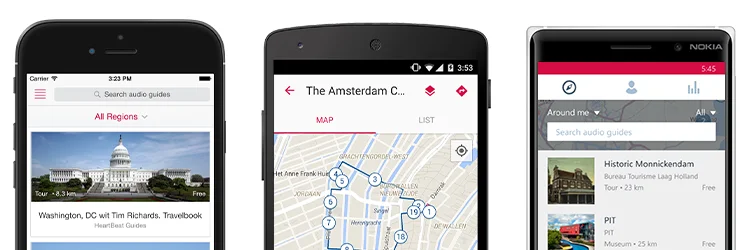音频游览 Korean War
- 下载的应用程序!
- iOS
- Android
- Windows Phone
To see a time line of the Korean War that includes the countries involved and the casualties of each, click on the above link. It is really cool.
The period following World War Two was one of sparring, posturing, and rearranging global balances. Included was Korea which had been divided at the 38th Parallel. North of the Parallel was North Korea, heavily influenced and supported by Communist Russia. The South installed a democratic regime under the anti-Communist president Syngman Rhee. The intention of World War Two Allies was an eventual reunification of all Korea. However, on June 25th,1950 the North Korean People's Army crossed the 38th Parallel and invaded South Korea. The United Nations reacted quickly by denouncing the unprovoked invasion. United Nations contingents, mainly under United States command, launched a major counter-offensive
In September 1950, under the command of General Douglas MacArthur, American combat divisions mounted an amphibious attack against the North Korean People's Army at Inchon, South Korea's major west coast port, only miles from the the South Korean capital of Seoul. The Korean Army was routed in only a few short weeks. But MacArthur, determined to punish the North and re-unify all of Korea, pushed his Armies towards the Yalu River bordering Korean with China. To protect their interests, on 19 October 1950, Chinese forces of the People's Volunteer Army entered the war causing UN forces to retreat south of the 38th Parallel.
On 11 April 1951, President Truman relieved General MacArthur as Supreme Commander in Korea. MacArthur was relieved primarily due to his determination to expand the war into China, which other officials believed would needlessly escalate a limited war and consume too many already overstretched resources.
General Ridgway was appointed Supreme Commander in Korea. He regrouped the UN forces for successful counterattacks, while General James Van Fleet assumed command of the US Eighth Army. Further attacks slowly depleted the North Korean and Chinese Armies. UN forces advanced to the Kansas Line, north of the 38th Parallel, close to where the war had started. Eventually the front stabilized, and the last two years were a war of attrition. The war in the air, however, was never a stalemate. North Korea was subject to a massive US bombing campaign. Jet fighters confronted each other in air-to-air combat for the first time in history. Soviet pilots co-vertly flew in defense of their communist allies.
The fighting ended on 27 July 1953 when the Korean Armistice Agreement was signed. The agreement created the Korean Demilitarized Zone separating North and South Korea, and allowed the return of prisoners. No peace treaty was ever signed. The two Koreas are technically still at war. In 2016, North Korea approached the United States about conducting peace talks to formally end the war. While the White House agreed to secret peace talks, the plan was rejected due to North Korea's refusal to discuss nuclear disarmament as part of the terms of the treaty.
The Korean War was among the most destructive conflicts of the modern era, with approximately three million war fatalities and a larger proportional civilian death toll than World War II or the Vietnam War. It incurred the destruction of virtually all of Korea's major cities, thousands of massacres by both sides, including the mass killing of tens of thousands of suspected communists by the South Korean government, and the torture and starvation of prisoners of war by the North Koreans. North Korea became among the most heavily bombed countries in history.
游览停留
评论
创建您自己的音频之旅!
使用此系统的移动导游应用是免费的


